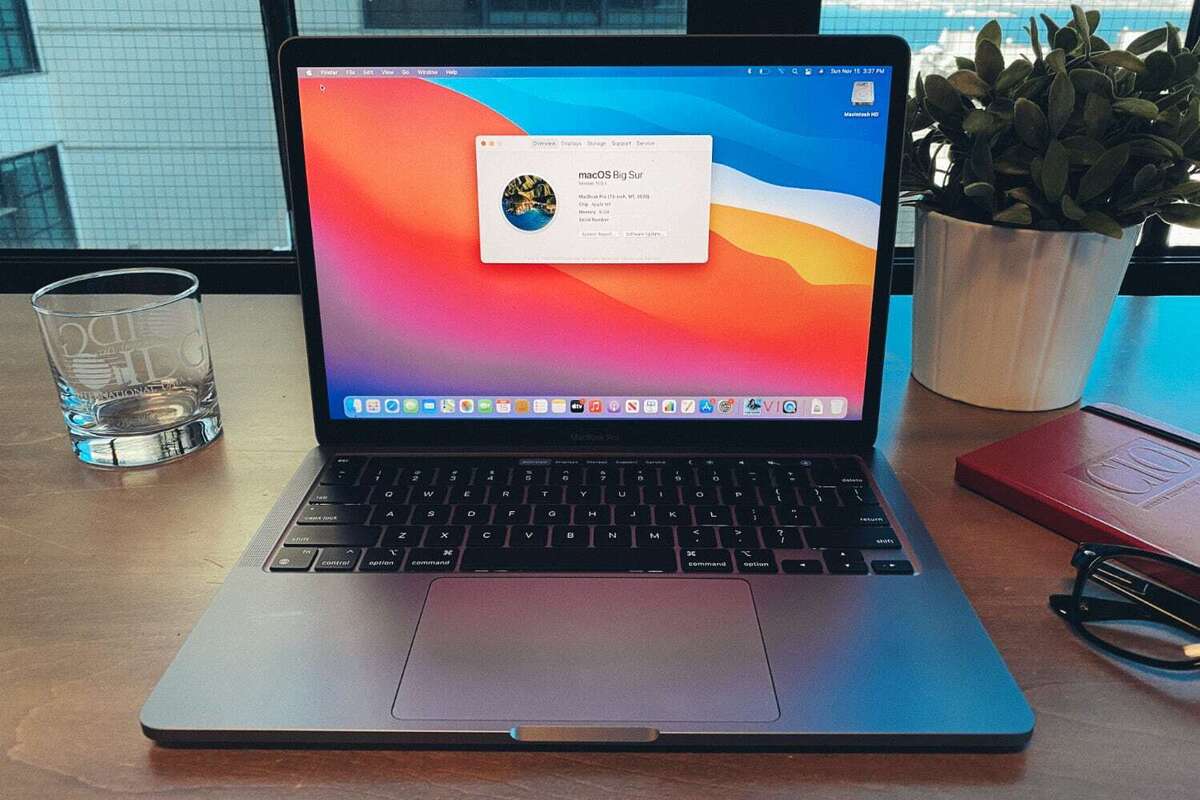[ad_1]

Apple’s new M1 processor took the laptop world by storm, with many proclaiming it had ended the PC’s whole career.
Hyperbole and irrational fanboy flexing aside, Apple’s M1 is indeed a powerful chip. But to get a better feel against its contemporaries we sat down and retested a pile of current Windows 10 laptops to get an idea where the M1 MacBook Air 13 lands in the pecking order of laptops.
While we don’t have direct access to an MacBook Pro M1, our sister publication, Macworld does, so we cribbed from its glowing review of the 13-inch MacBook Pro M1. Macworld also graciously ran a couple of additional tests for our analysis. For two other results, we relied on published results from Puget Systems, a bespoke system builder that manufactures workstations and rolls its own productivity-focused benchmarks.
Our tests show the M1 MacBook Air 13 performing very well compared to equivalent PC laptops. You can jump straight to our conclusion for the final analysis, but if you want to dig deeper to see exactly where and how the M1 does well, read on…
The laptops we tested
Apple’s MacBook Pro M1 features its spiffy new M1 Arm-based SoC/CPU, a 512GB custom SSD, 16GB of LPDDR4X/4267 memory, a 13.3-inch 2560×1600 screen, and lap weight of 3.1 lbs.
For our PC comparisons, we decided to pick from laptops that are similar in size and weight:
- MSI’s Prestige 14 Evo is equipped with a four-core, 11th-gen Core i7-1185G7 with Iris Xe graphics, 16GB of LPDDR4X/4267 memory, a 512GB PCIe Gen 4 SSD, and a 14-inch FHD screen. It weighs 2.7 lbs.
- MSI’s older Prestige 14 is equipped with a six-core, 10th-gen Core i7-10710U, GeForce GTX 1650 Max-Q graphics, 16GB of LPDDR3/2133 memory, a 1TB PCIe 3.0 SSD, and a 14-inch 4K screen. It weighs 2.8 lbs.
- Lenovo’s Yoga Slim 7 has an eight-core Ryzen 4800U with Radeon graphics, 16GB of LPDDR4X/4267 memory, a 512GB PCIe 3.0 SSD, a 14-inch FHD, and lap weight of 3.1 lbs.
- The Asus ROG Zephyrus G14 includes an eight-core Ryzen 9 4800HS, GeForce RTX 2060 Max-Q graphics, 16GB of DDR4/3200 memory, a 1TB PCIe 3.0 SSD, a 14-inch FHD screen, and a weight of 3.6 lbs.
Before you object to having the Zephyrus G14 laptop here, pay close attention to the weight and size of the laptop. At 3.6 lbs., it’s actually very close to the weight of the Lenovo Yoga Slim 7 and the Apple MacBook Pro 13, which are each 3.1 lbs. We think there are indeed some people who might consider the Zephyrus G14 to get the extra power its GeForce RTX 2060 Max-Q provides. Yes, the 180 watt power brick adds even more weight to the G14, but it may just be worth it to those folks.
We think discrete graphics are one of the overlooked features of the older MSI Prestige 14 too—a laptop that weighs less than the Lenovo Slim 7 and MacBook Pro M1, but features a GeForce GTX 1650 Max-Q GPU inside. There are indeed several compromises in the older Prestige 14 to get that GPU, which we detailed in our original review, but weight is typically the great equalizer.
That’s why the final laptop we included is really there for a raw performance comparison, since no one would consider it remotely in the class of the laptops above:
- The Acer Predator Triton 500 with a six-core 10th-gen Core i7-10750H CPU, GeForce RTX 2080 Super graphics, 32GB of DDR4/3200 memory, a 1TB PCIe 3.0 SSD, and a 15.6-inch 300Hz FHD screen. It weighs 4.6 lbs.
We wanted this laptop particularly for its Core i7-10750H CPU, which is very similar to Intel’s 8th-gen and 9th-gen “H” class CPUs found larger laptops such as Apple’s MacBook Pro 16. Most of the laptops here feature lower-power CPUs, so we wanted to see just how well the M1 and other chips in smaller laptops compared against a chip that sucks down many more watts.
Of all of the chips here, Apple’s M1 uses TSMC’s most advanced 5nm process, with the two Ryzen laptops using TSMC’s 7nm. Intel’s 11th-gen “Tiger Lake” Core i7-1185G7 is on Intel’s newest 10nm process, while the Core i7-10710U is like the Core i7-10750H and built on Intel’s—how can we say this politely?—wise 14nm process.
Next page: Performance benchmarks
[ad_2]
Source link